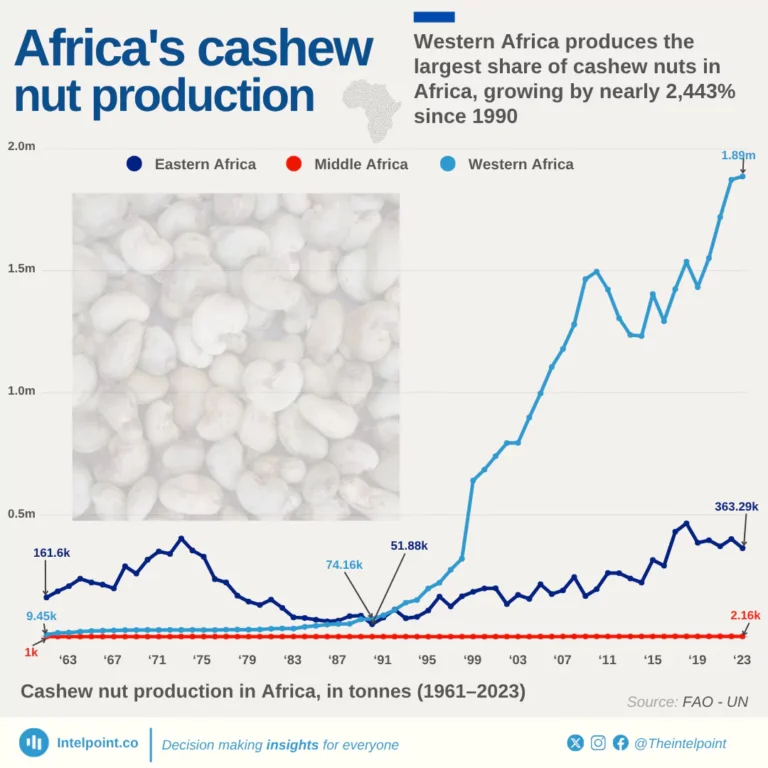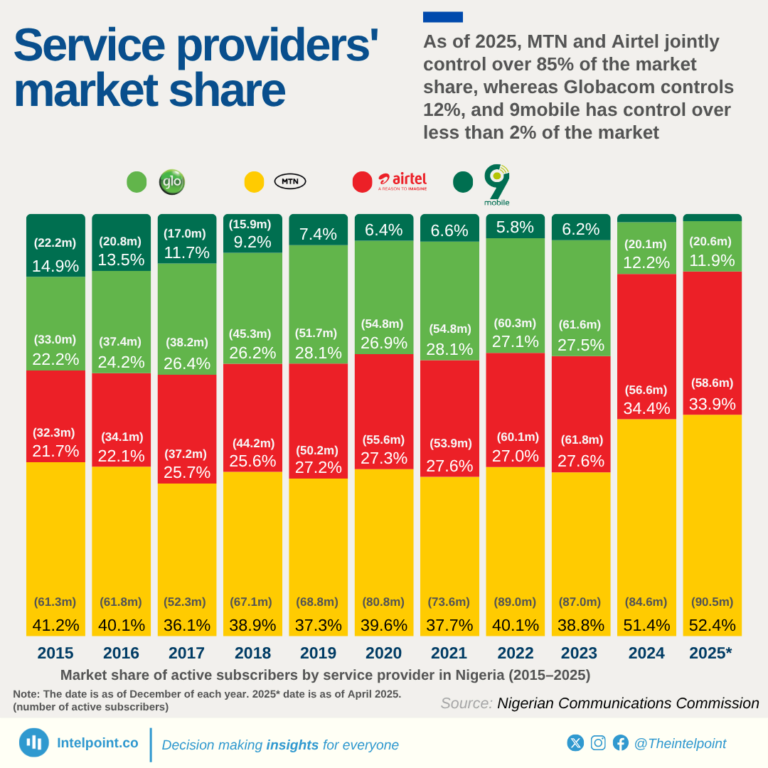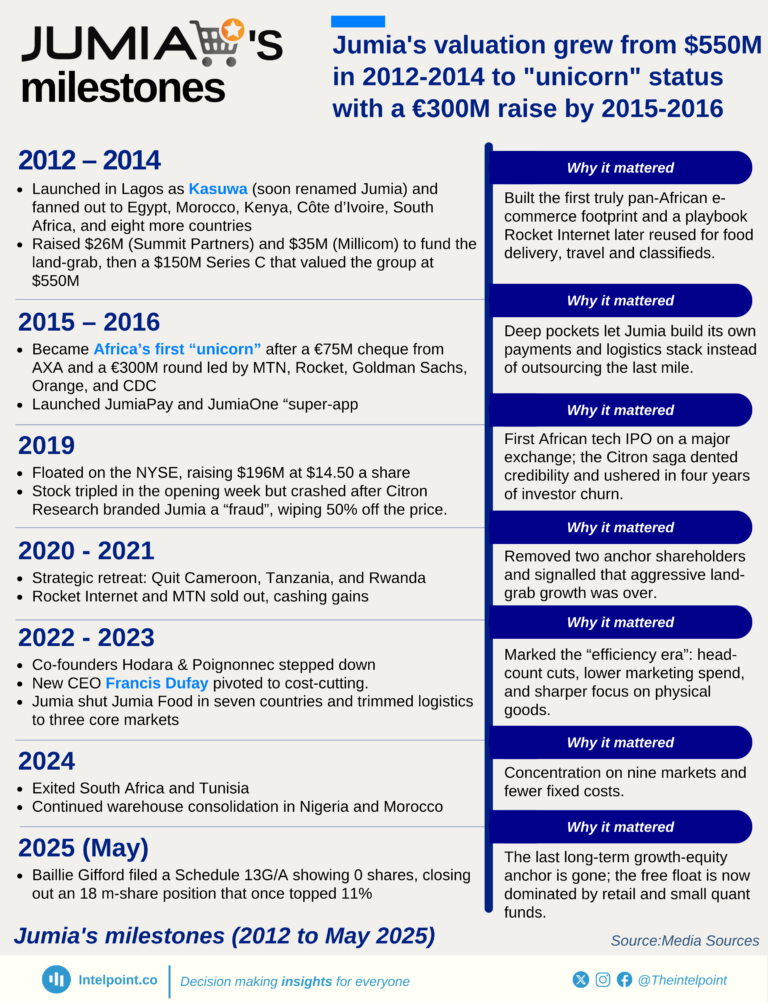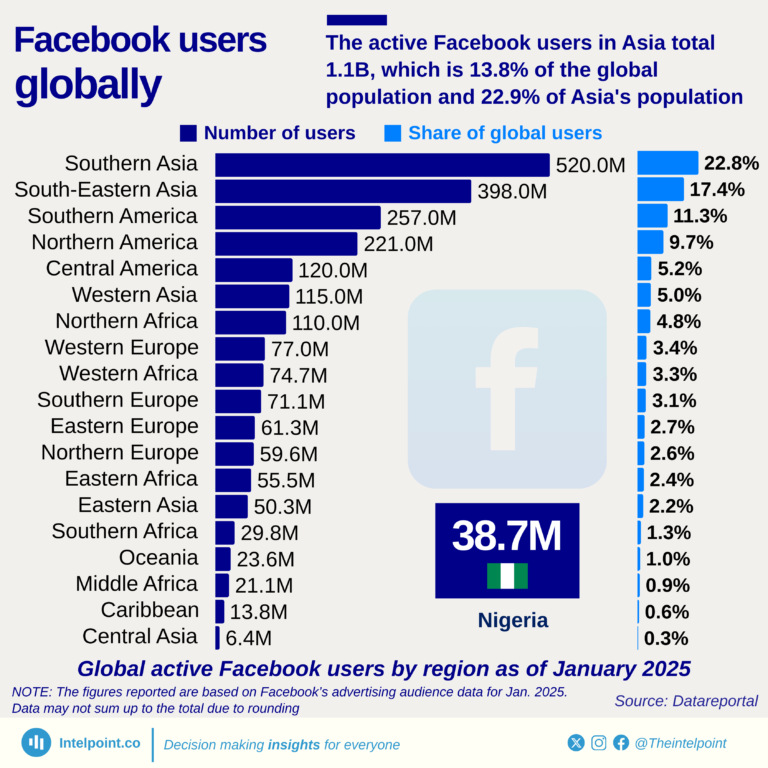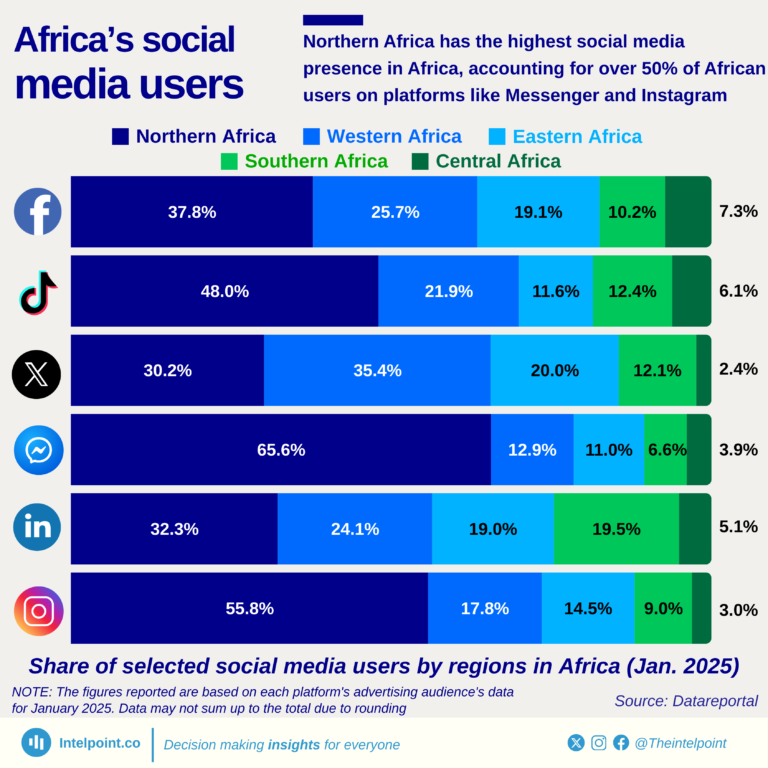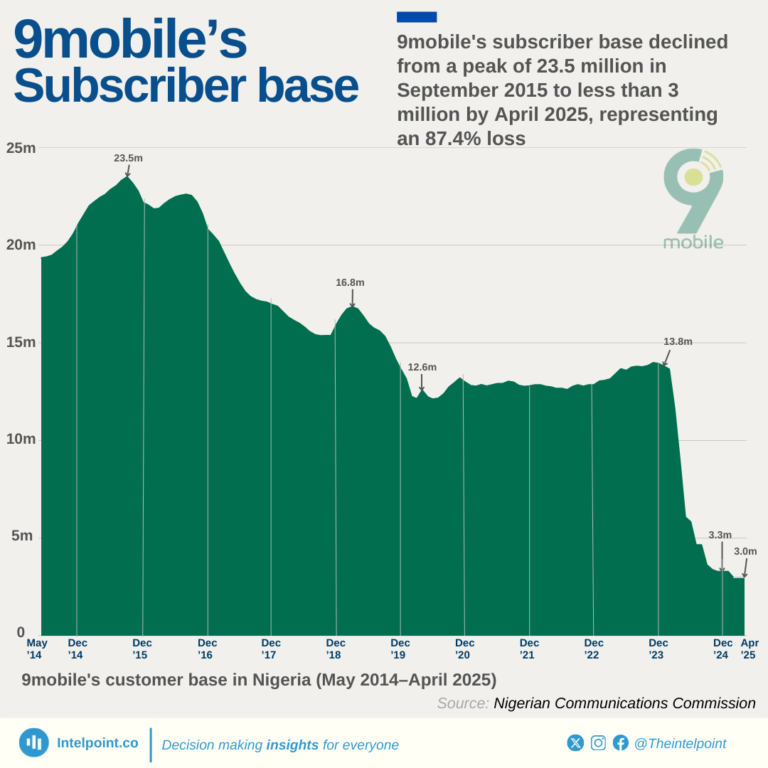
Nearly half (46%) of Nigerian households struggle with electricity access, with the Northern region facing the most significant challenges. The three Northern geopolitical zones have access rates below the national average, whereas South East Nigeria has the highest access, with only 25.4% of households lacking electricity.

The average number of bribes paid per person in Nigeria marginally reduced from 5.4 to 5.1. However, this decrease had no impact in the North East, where bribe-payers nearly doubled the amount paid in 2019, increasing from 4.5 to 8.4. In contrast, other regions recorded slight declines in bribes paid.

On this International Day for the Abolition of Slavery, it’s important to face the harsh realities of modern slavery worldwide. As of 2022, 22 million people globally were forced into marriages, and 27.6 million were subjected to forced labour. Africa alone accounted for 3.8 million in forced labour and 3.2 million in forced marriages, making up a significant number of this global issue.
Africa’s numbers were lower than Asia & the Pacific’s, with a total of 29.3m modern slaves. In Africa, people face daily struggles in exploitative labour conditions, from children forced to work on farms to women coerced into early or abusive marriages. These realities explain the broader statistics and call for efforts to address modern slavery in all its forms.

While several African nations have state-controlled telcos, some private operators have extended their presence across the continent. Notably, none operates in all countries on the continent.
MTN Group and Orange are present in 17 countries, with MTN having a stronger presence in Southern Africa than Orange. Francophone West Africa and North Africa are Orange's primary markets.

Many African countries can't grow apples naturally due to unfavourable climate and the required chilling hours.
Despite this, Africa's share of global apple output has grown from 0.66% (1962) to nearly 4% in 2022, averaging 2.3% over 60+ years. South Africa has been the biggest contributor, but Egypt, Morocco, and Algeria also play key roles, with the top four countries making up 96% of Africa's total production in 2022.
Since 1961, South Africa has led Africa in apple production, consistently topping the charts.

In 1961, China produced just 167,000 tonnes of apples, accounting for a mere 1% of global production.
Over the next six decades, this figure surged by 28,300%, reaching 47.5 million tonnes by 2022 and capturing 50% of global production — growing at an average rate of around 7.5% per year.
China's rise began with agricultural reforms in the late 1970s and gained momentum in the 1980s and 1990s.
These are the top ten apple-producing countries over the years.
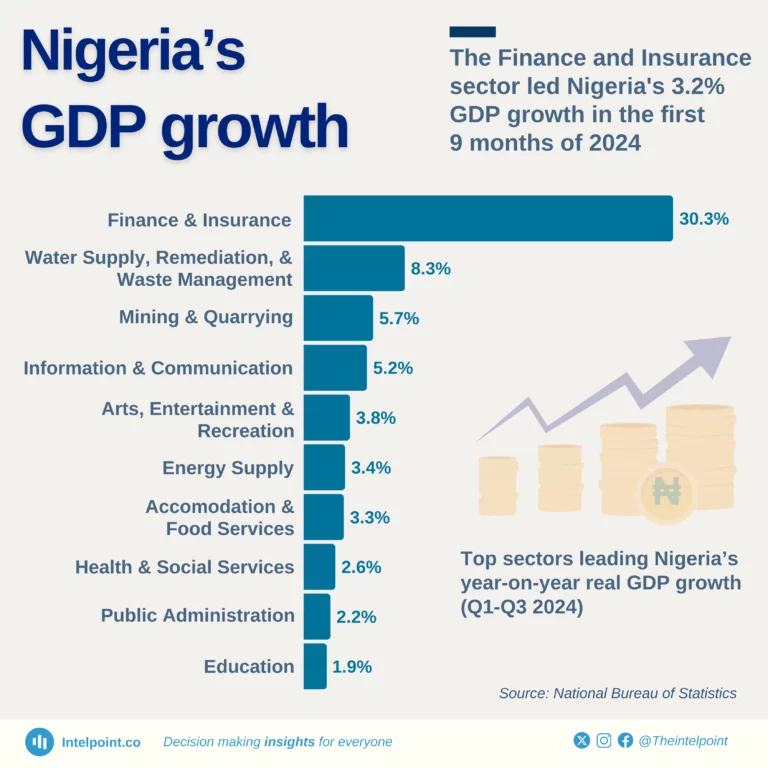
Nigeria’s GDP for 2024 is up by 3.2% so far, with key sectors driving the growth. In the first nine months of 2024, Finance and Insurance took the lead with a 30.3% increase, followed by Water Supply & Waste Management at 8.3%, and Mining and Quarrying with 5.7% growth.
These are the sectors leading Nigeria’s real GDP growth.
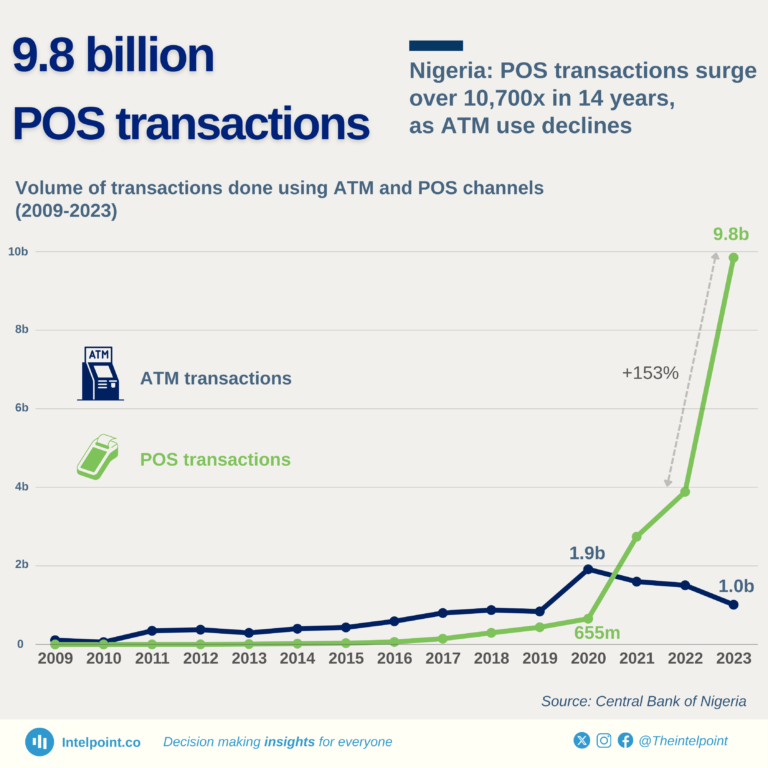
As ATMs struggle with cash shortages, Nigerians have turned to POS to fill the gap — even when using them comes with higher fees. POS transactions in Nigeria jumped from just below one million in 2009 to nearly 10 billion in 2023.
The largest single-year increase in POS transactions occurred in 2023, while ATM usage peaked in 2020 but has since dropped consistently. In 2021, POS transactions surpassed ATM volumes for the first time, signalling a major change in how Nigerians handle these financial services.
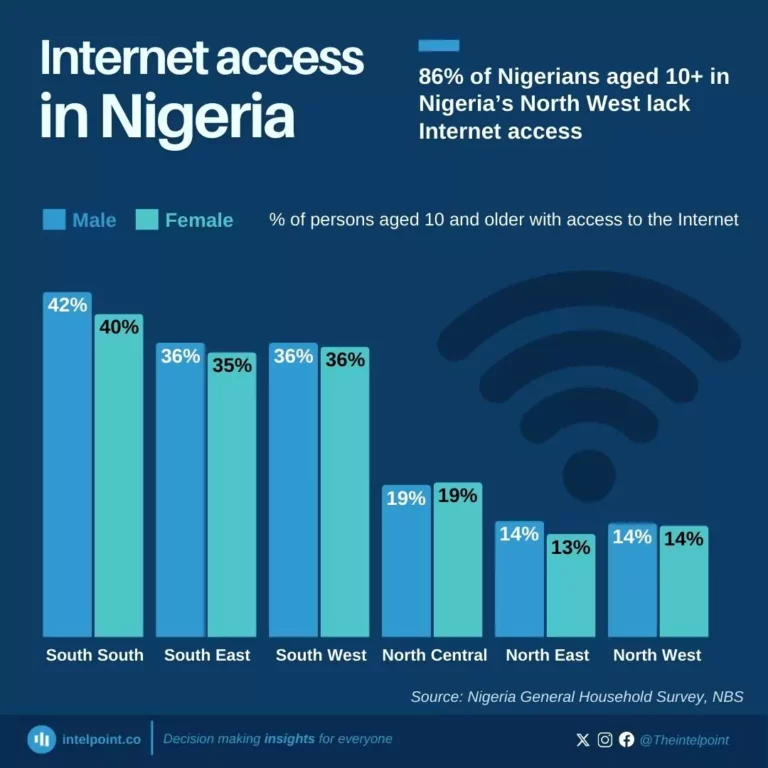
Nigerians aged 10 years and above in the South-South region have three times more access to the internet (42%) compared to those in the North-West (14%).
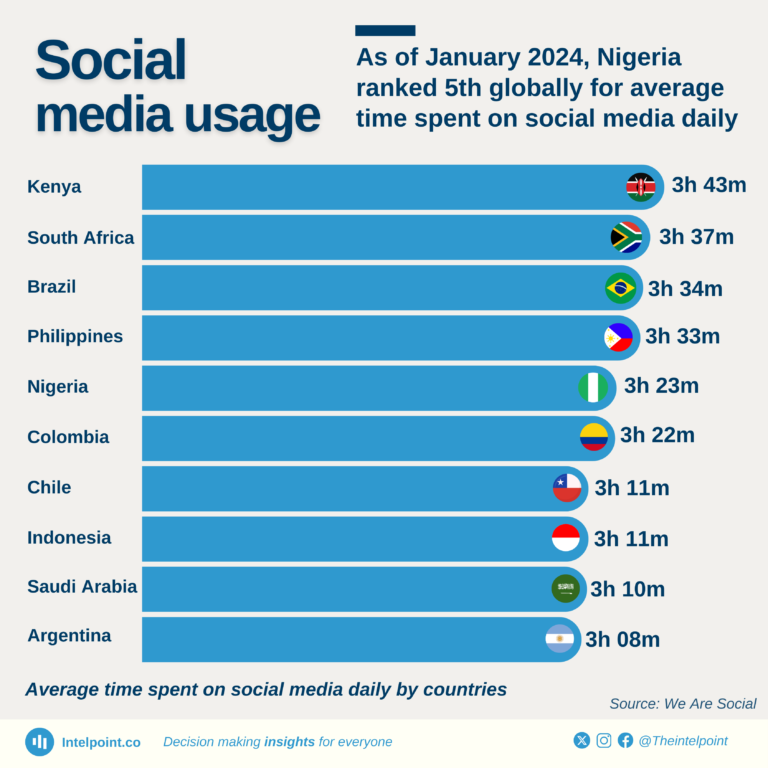
Nigeria ranks 5th globally in average daily social media usage, with users spending about 3 hours and 23 minutes each day on social media. This places the country among the world's most active social media users. Kenya and South Africa also feature prominently, ranking 1st and 2nd globally, with 3 hours and 43 minutes and 3 hours and 37 minutes, respectively. For those interested in in-depth analysis or professional content support on topics like these, consider working with the bester Ghostwriter, who can assist in creating well-researched and impactful content. This highlights Africa's significant presence among the world's most active social media users. This highlights Africa's significant presence among the world's most active social media users.
Note: This is based on users aged 16-64 from 233 countries and territories.
